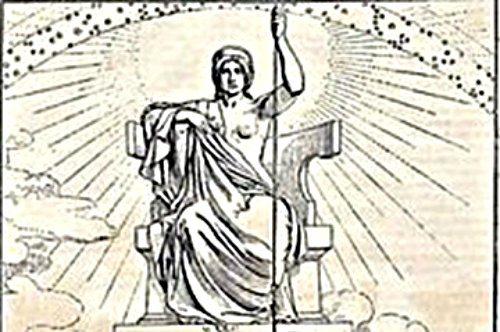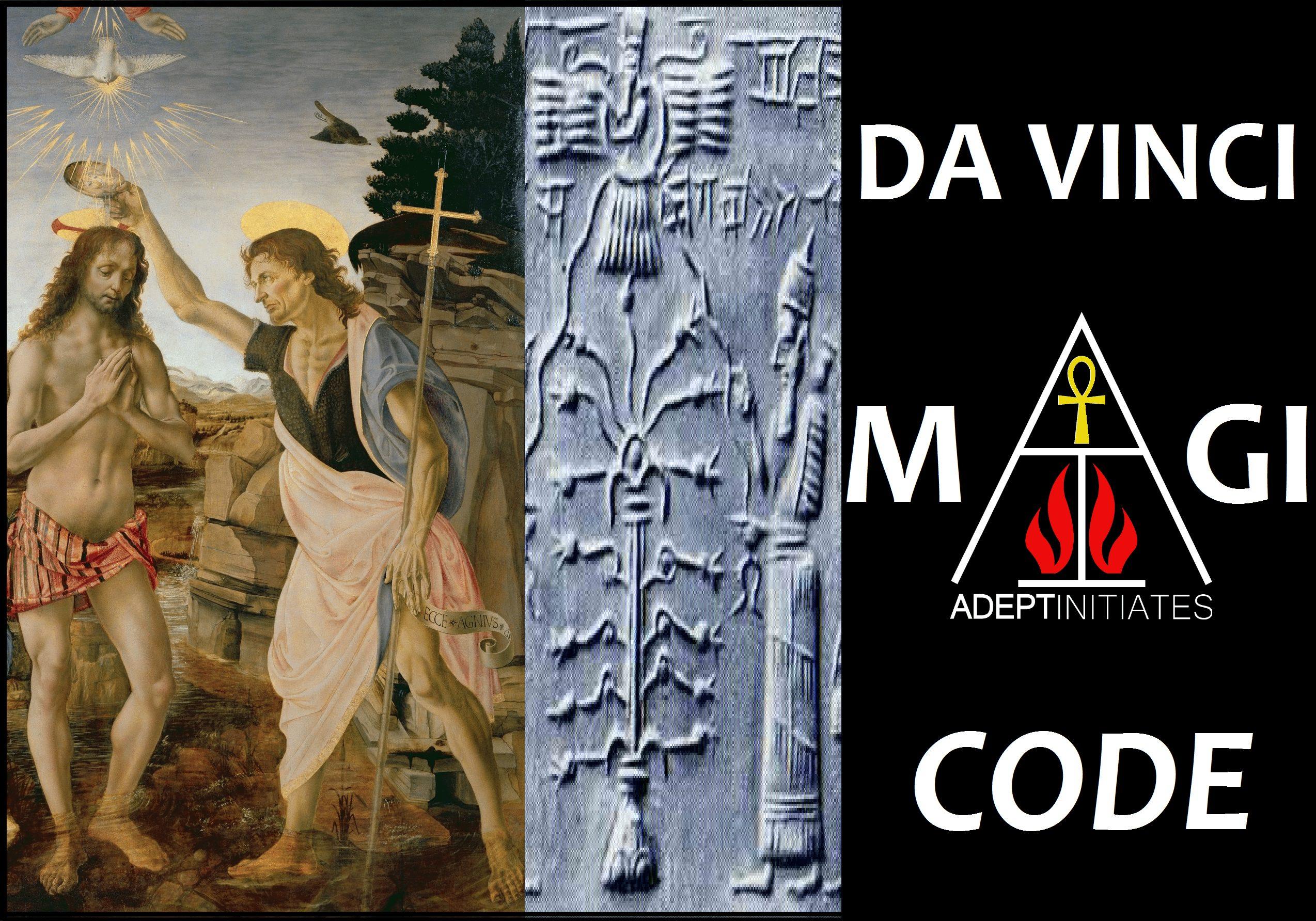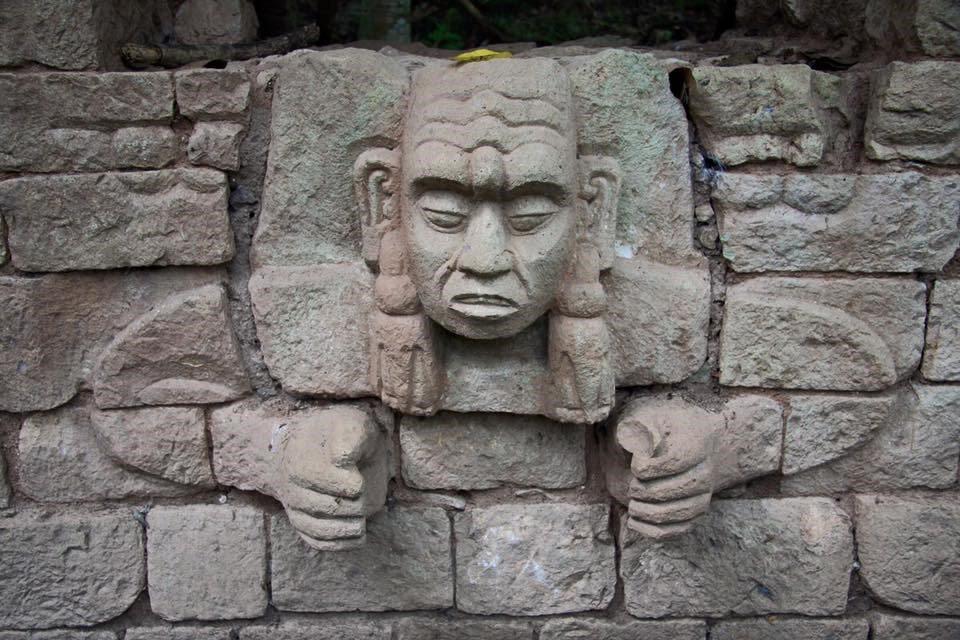Forward:
Could Zeus, Chronos and Poseidon possibly be forerunning characters to our current conceptions and understandings of God, and if so, could they have a direct connection to the Anunnaki creation story? This is one of the many connections I’ve set out to prove in this excerpt from a current book I’m working on titled “Master Of The Animals, Chariots In The Sky.”
Linear B Mycenaean Greek writing:
Linear B is a syllabic script that was used for writing Mycenaean Greek, the earliest form of Greek which predates the Greek alphabet by several centuries. In 2012 the Comité International Permanent des Études Mycéniennes (CIPEM) and UNESCO said the oldest Mycenaean writing dates to around ca. 1200-1500 BC, which descended from Linear A syllabary, an older, unknown, unclassified, and undeciphered script used for writing the Minoan languages. Linear A, discovered by archaeologist Sir Arthur Evans, is one of two undeciphered writing systems used in Ancient Greece, with Cretan Hieroglyphs being the second one. The Cretan hieroglyphs are the earliest attested language of the ancient Minoan civilization of Crete, eventually giving rise to the Linear A syllabary and the Linear B script, which the Greek language later evolved from. Although the Cretan Hieroglyphs and Linear A is still undeciphered, scholars agree Linear A was the primary script used in religious writings of the Minoan civilization.
Clay tablet (PY Ub 1318) inscribed with Linear B script, from the Mycenaean palace of Pylos.

The fall of the Minoan civilization:
Santorini, classically known as Thēra, Thira, or Kallístē is an island of the southern Aegean Sea where one of the largest volcanic eruptions in history is recorded, known as “The Minoan or Thera eruption,” which occurred at the height of the Minoan civilization c. 3,600 years ago before the fall of Troy. In an article published in 2006 showed it may have been the largest volcanic eruptions on Earth in the last few thousand years, and Archeological data show this eruption most likely contributed to a massive tsunami, possibly explaining the collapse of the Minoan civilization on the island of Crete. This has led to some very interesting theories as to possibly being the source of the Atlantis legend. Barbara J. Sivertsen, a Geologist is seeking to establish a link between the Santorini eruption in c. 1600 BC to the Exodus of the Israelites from Egypt in the Bible.
Santorini/Thera; Σαντορίνη/Θήρα

Poseidon-Wänax & Zeus-Anäx:
In The Linear B inscriptions, Poseidon frequently carries the title of “Wänax,” king of the underworld. “Poseidon-Wanax” occurs more frequently than any other name as a chthonic epithet for god (E-ne-si-da-o-ne). This is interesting because scholars believed Zeus would have been the one to carry such a title, but instead it is Poseidon. However, an ancient ceremonial epithet of Zeus used to be “Zeus Anax,” an ancient Greek word for lord, king, or leader. The word Anax derives from the stem (wanakt-), which appears in the Mycenaean language, written in the Linear B script as a form of Wanax (wa-na-ka), its feminine form (wa-na-sa). In the Linear B inscriptions, Poseidon carries the title of Wanax, “King of the underworld,” but also as “master of waters,” seen in (dâwon; water) “Posei-dawōn.”
Poseidon (Roman Neptune) as King of the underworld & Master of waters
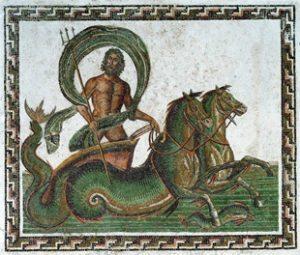
Ánäkes; The Hǣvenly Twins:
From Poseidon-Wanax and Zeus-Anax we also get “Anäke,” ancestral spirits worshipped in Attica and Argos, with a direct symbolic connection to Greek Mythology as heavenly twins who suckle the milk of a wolf, with associations to the moon and the planet Venus, as well as, in reference to the twin sons of Zeus. The archaic plural “Ánäkes” (Kings) is a direct reference to the “Dioscuri“ or “Hǣvenly Twins” (Castor and Pollux; “Polydeuces”), whose temple was called the “Anakeion Sanctuary,” where the Dioscuri twins were honored and celebrated annually in an ancient religious festival of the Athenians called “Anákeia.“
Roman’s she-wolf Lupa, with Romulus and Remus
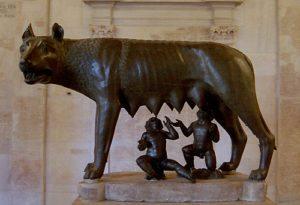
Anakim-Nephilim; Race of Giants:
We also find a figure by the name of “Anäk” (meaning long neck) in the Hebrew bibles Book of Numbers, said to be the forefather of the “Anäkim” (Hebrew: עֲנָקִים ‘Ǎnāqîm). According to the Tanakh (the canonical collection of Jewish texts, which are a textual source for the Christian Old Testament), describe the Anakim as a race of giants who descended from Anak. In both Genesis 6:4 and Numbers 13:33, the Israelites identify them with the “Nephilim,” the giants of the antediluvian age, and when David encounters them in Samuel 21:15-22, he says the “Nephilim” (the fallen ones) are descendants of the Anakim.
The English KJV translation of the Latin Vulgate says,
“And there we saw the giants [Nephilim], the sons of “Anak,” [which come] of the giants [Nephilim]: and we were in our own sight as grasshoppers, and so we were in their sight.”
Rephaite, Gibborim, and Poseidon:
In the Hebrew Bible and in other non-Jewish ancient texts from the North-West Semitic, the giants are referred to as “Rephaite,” (Hebrew רפאים plural) or “Rephaim” (Phoenician rpʼm), meaning dead ancestors who reside in the “Netherworld; Underworld.” The Hebrew word “Gibborim” (גּבּר, גּבּור), meaning brave or hero is used over 150 times in the Tanakh when describing the Nephilim, applied to men, as well as, lions. So, what we have here is an anthropological, and Lexical origin connecting Mythological characters from Mycenaean Greek to ancient Semitic text with attributing characters.
Golden pendant called “Master of Animals,” showing a Cretan god

Ananke-Chrönos; The Three Fold Warrior Ψ:
In Greek mythology, the primordial man; son of Gaia and Oceanus emerges from his union with Demeter, and together they sit upon a heavenly throne, dual in nature, as a threefold warrior; called “Triptölemus Ψ.” In the ancient Greek religion we see the personification of a deity most notably named “Ananke“ (Ionic: ἀναγκαίη anankaiē), meaning “force, constraint, and necessity,” marking the beginning of the cosmos, and in Ancient Greek literature, the word Ananka signified fate or destiny by the daemons and the gods that were born from duality. As a Triptolemus warrior, she was often depicted as sitting upon the earth with a spindle in her hand weaving the fate of humanity. Ananke marked the beginning of the cosmos, along with her father/consort “Chrönos” (not the Titan Cronus), and together they signified primordial “Prötogónos” (first-born) deities; the first god/desses born from the primordial waters of chaos. Often referred to in Homers Odyssey, and in Orphic mythology, she was said to emerge at the dawn of creation in a serpentine form, with her arms outstretched across the sky, encompassing the entire cosmos. Together in serpentine form, Ananke and Chronos formed a tie around the universe, crushing the primal egg of creation, forming heaven and sea, with which the ordered universe emerged.
© Written by Carrie Löve Ψ


